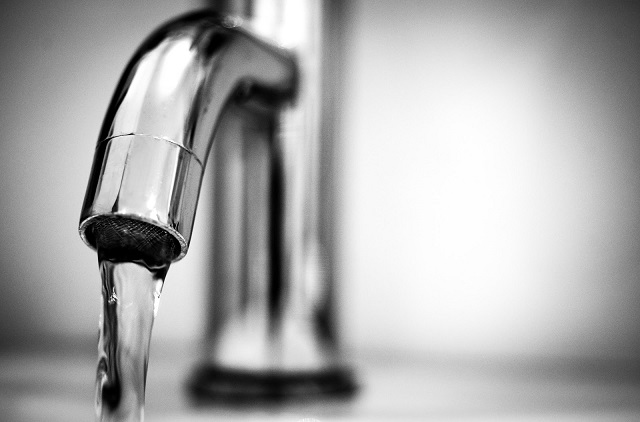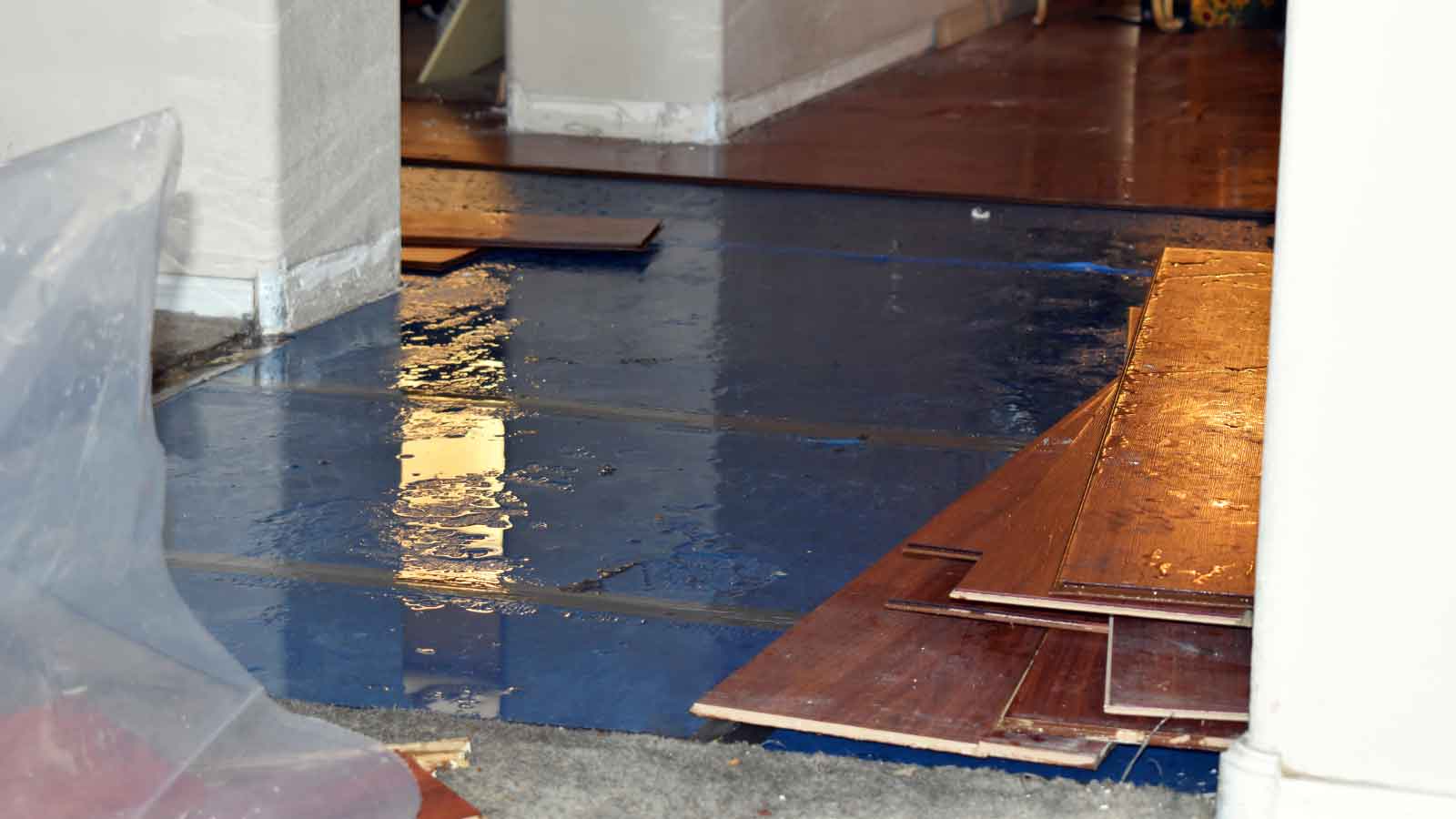
Think of a tiny dot like this one: [•]. It’s small, right? But if this dot was a hole in your home’s water system, it could waste over 4,000 gallons of water every month. That’s a lot of water – enough for daily showers for an entire year!
Water is essential. We need it every day, and so do our pets and the environment. Every drop counts. So, even small leaks in our homes are a big deal and need to be fixed right away.
To help with this, we’ve created a water leak detection and prevention guide to help you identify and fix common water leaks in your home.
Understanding the Common Causes of Water Leaks
The plumbing system that brings that water into the buildings (and drains it back out) is an incredible feat of engineering. It’s a complex network of pipes, fixtures, and appliances that work together to keep water flowing in and out efficiently. But with all these moving parts, there’s bound to be some wear and tear.
But the bigger picture reality is that water leaks happen all the time and in almost every building, home, office, and industrial workplace. And while not all leaks are the same, there are a few common causes that you should be aware of:
- Aging Pipes and Plumbing Systems
- Roof and Gutters
- High Water Pressure
- Foundation and Basement Problems
- Aging Infrastructure and Natural Disasters
Water leak issues are not limited to the occasional dripping from your faucets and showerheads. Unfortunately, there are various water leak conditions that, if untreated, develop into a significant disaster over time. This information will review some of these water leak situations and help you understand how a professional service like ours will handle them right away. The best part is that any Los Angeles rain leak detection – detected or undetected – is solvable, and we take steps to ensure that they never recur in the future.
Water Leak Detection And Potential Issues
Undetected water leaks can wreak havoc on your roof, attic, stucco wall, the house’s interior, and the foundation of your building if left alone. Our water leak detecting service is designed to help find the source and isolate the leaks in boiler systems, sprinkler systems, plumbing lines, and water lines. By detecting the leak early on, as Los Angeles rain leak specialist’s we establish a sturdy defense against future leaks and potential problems. More times than not, these problems go unnoticed for years only to surface in the form of a major catastrophic event. Undetected leaks from the irrigation system may reach the foundation of your building and flood the area. When flooding happens, the foundation will start to weaken, crumble, and eventually collapse.
What Are the Visible Signs of Water Leaks?
Now that we understand some of the common causes of water leaks, it’s essential to be able to identify when a leak is occurring in our homes. Here are some visible signs to look out for:
- Dripping or running water sounds, even when all faucets and appliances are turned off.
- Unexplained increases in your water bill. A higher bill may indicate that water is being wasted due to a leak.
- Musty or moldy smells, particularly in areas near pipes or fixtures. These odors can be a sign of hidden leaks.
- Water stains on walls, ceilings, or floors. These patches could indicate an active leak behind the surface.
- Bubbling or peeling paint, particularly in areas that are frequently exposed to moisture.
- Warped or discolored floor tiles. Water leaks can cause damage to flooring, resulting in noticeable changes in appearance.
Building Leak Detection
If the water leaks are present beneath the surface, such as foundation or lawn grounds, there are alternatives to the conventional digging practices performed by some leak detecting services. Our water leak detection technique to detect the leak’s source is unique in that we use the latest technology in the market to detect leaks, such as infrared thermography and ultrasound. Whether yours is a residential property or a commercial one, we use state-of-the-art equipment to pinpoint the leak without digging the area around. So, no holes in your yard and no ruining of your landscape. Instead, our equipment will quickly scan the location and constantly look for leaks. If you want to learn more you can read about 5 reasons why your window may be leaking in your building.
Overload Prevention
Building systems tend to overwork when there is a leak, and the water is seeping through the roofs, doors, and windows. For example, the excess moisture build-up can cause the HVAC unit to work harder than necessary due to humidity in the interior atmosphere. Likewise, water leaks and moisture can escape into the stucco wall and between its layers, causing mold and mildew buildup, potentially spreading to other parts of the building. Additionally, bare roofs without flashing or additional rainwater diverting mechanisms are always vulnerable to leaks and excess moisture. Our professional diagnostic testing or window water leak detection helps prevent all these from happening in the first place.
How to Detect Water Leak: The Ultimate Checklist
In just 15 minutes, you can perform a quick check to see if there are any hidden water leaks in your property. But first things first, spot your shut-off valve. This is critical should you experience an emergency leak or even before a plumber pays a visit. Whether at home, work, or in any public space, knowing where the main shut-off valve is located can save time and money if a water leak occurs.
Step 1: Checking Indoor Leaks
Leaky Toilets
According to the Environmental Protection Agency (EPA), “the most common source of leaks is toilets, accounting for almost 30 percent of indoor water use.” To check if your toilet has a leak, add five drops of food coloring to the tank. Wait 15 minutes and see if any color appears in the bowl. If it does, you have a leak that needs attention. Common causes include:
- Float arm problems: Remove the cover from the tank and look at the float arm. If it is set too high, water will overflow into the overflow pipe. This means the float arm or ball needs adjustment or replacement.
- Flapper issues: The flapper is a small, rubber flap that covers the hole in your tank where water flows into the toilet bowl. It’s attached to a chain that controls how long it remains open. When you flush, this flap should open and close completely, sealing off the hole so water can fill up again in the tank. If it’s not sealing properly, the water will continue to drain into your bowl.
- Overflow tube difficulties: The overflow tube is a small, vertical tube designed to prevent your toilet from overflowing. It’s connected to the flush valve assembly and sits in the middle of the tank. When you open up your toilet tank, you’ll see these black plastic tubes running up from the bottom of the tank. The tube’s job is to take water that has risen too high in your toilet tank down into the bowl. If this tube or valve isn’t working correctly, you’ll see water trickling down the sides of your toilet bowl.
Do The Toilet Color Test:
A simple test with your toilet can reveal leaks. Here’s how: Add some food coloring to the water in your toilet tank and wait for about 10 minutes. If the color starts appearing in the bowl, there’s a leak. Do remember to flush afterward to prevent any stains. If you do spot a leak, the problem might be a worn-out toilet flapper.
The Leaky Faucet
Dripping Faucet: If you find a dripping faucet, start by ensuring it’s closed tightly. If the dripping persists, it’s likely due to a worn or incorrect-size seat washer (sometimes referred to as a stem washer). Replacing this washer might be a task you can handle on your own with minimal tools like an adjustable wrench and a couple of screwdrivers. However, if the faucet is washerless, it could be time to call a professional plumber.
Changing the Washer: Before you start replacing the washer, turn off the water supply to the specific faucet. Usually, kitchen and bathroom sinks have shut-off valves located beneath them. Turn this valve clockwise until tight to halt the water supply, ensuring the rest of the house remains unaffected. Make sure that the replacement washer is of the exact size as the worn-out one to avoid recurring leaks.
Step 2: Check Other Common Causes of Indoor Leaks
While toilets and faucets are frequent culprits, several other indoor components can contribute to unexpected water wastage. It’s essential to inspect and address these less obvious sources to ensure comprehensive water conservation in your home.
- Water Heater Tank: Check the pressure valve release on your water heater tank. If it’s stuck, it can leak, causing water to drip down the tank and collect on the floor. This valve is usually a brass fitting at the top of the tank.
- Boiler: If you hear a continuous sound of running water from your boiler, instead of periodic starts and stops, you might have a leak.
- Water Softener: A continuous sound of running water from your water softener, especially between 2 a.m. and 4 a.m., indicates a possible recycling issue.
- Washing Machine: If you find water on the floor near your washing machine, call a repair service to check for leaks.
- Humidifier: Pooling water under your humidifier suggests a leak. If the overflow discharge goes into a drainage line, continuous running water can hint at a stuck float valve.
- Fire Suppression Systems: Modern homes and businesses often have these systems. Regularly check the sprinkler heads to ensure they don’t leak.
- Refrigerator Ice-making Unit: Excessive ice in the freezer or puddles under the refrigerator point to a leak in the ice-making unit. Consider calling a repair service for a diagnosis.
- Dishwasher: Water on the floor near your dishwasher indicates a potential leak. A professional repair service can help pinpoint and resolve the issue.
- Bathtubs & Showers: Inspect the spout and showerhead for drips. If you spot any, you might need to replace the washers on the faucet handles. Turn off your home’s main shut-off valve before attempting this repair.
Do the Final Check: Don’t forget to inspect sinks or water appliances in overlooked areas like the garage, basement, or attic. Regular checks help catch leaks in these hidden spaces.
Step 3: Checking External Leaks
While indoor leak checks are crucial, many often overlook the outdoor water systems. These also require your attention to ensure a comprehensive leak-free environment. Here’s a breakdown of the outdoor areas to inspect:
- Water Faucets: Inspect each outdoor faucet for leaks. Ensure they’re tightly closed when not in use. If you encounter a leaking faucet, turn off the shut-off valve before replacing the washer. In colder climates, remember to close the indoor shut-off valves during winter to prevent freezing. Drain residual water by opening the outdoor faucets. You’ll typically find the shut-off valves in the basement.
- Automatic Lawn Sprinkling System: Examine your lawn for any soft spots. If you find any, they could indicate a leak in your sprinkling system where water is being absorbed into the ground.
- Swimming Pools: Monitor your pool’s water level. If it remains unusually high or overflows during use, the automatic shut-off valve might be malfunctioning and continually cycling water in and out. This issue needs addressing to prevent water wastage.
- Service Connecting Line: Keep an ear out for the sound of running water or look for soft, wet spots on your lawn, which could point to a leak in the service line leading to your home. Turn off the main shut-off valve. If you still hear water running, the service line might be leaking.
Now that you’ve checked for leaks and still can’t seem to find the source, it might be time to call a professional plumber. These experts have the necessary tools and experience to detect and fix leaks that you may not be able to identify on your own. Remember, early detection and repair of leaks can save you money on utility bills and prevent water damage in your home.
We Fix Water Leaks
Absolute Maintenance & Consulting is committed to fixing general issues of water leaks in your building. Taking the steps recommended by our technicians will help you easily prevent future leaks in the structure. Detecting existing leaks and professionally addressing them should be your priority if you want to protect your property. As you can see, a comprehensive strategy that involves identifying the source of the leak and correcting the issue, followed by identifying the underlying structural, environmental, and accidental factors, and addressing them within a given time frame is both practical and reasonable for the long run. Building leak detection and window leak detection are all best handled through professional services like our company.




